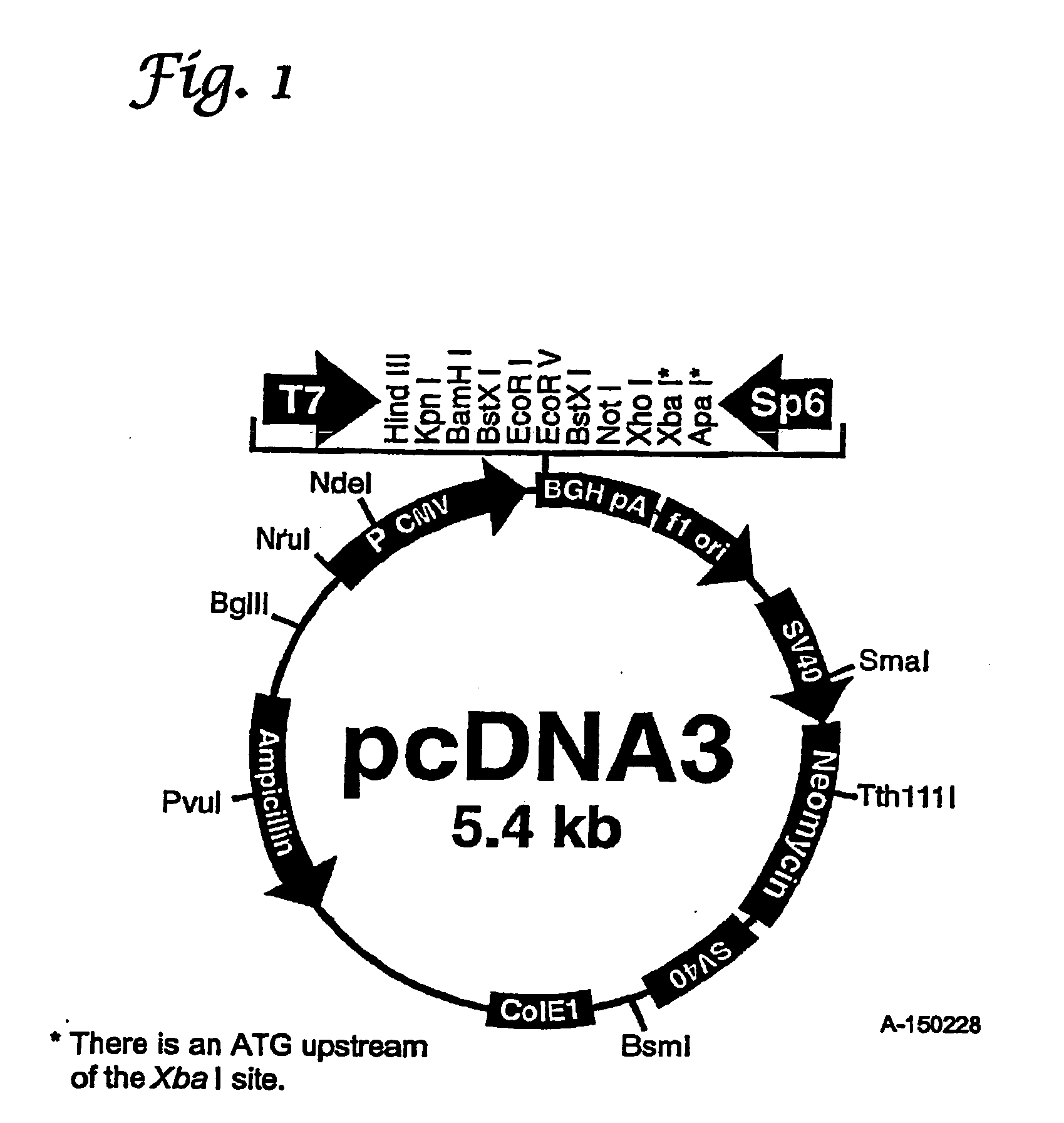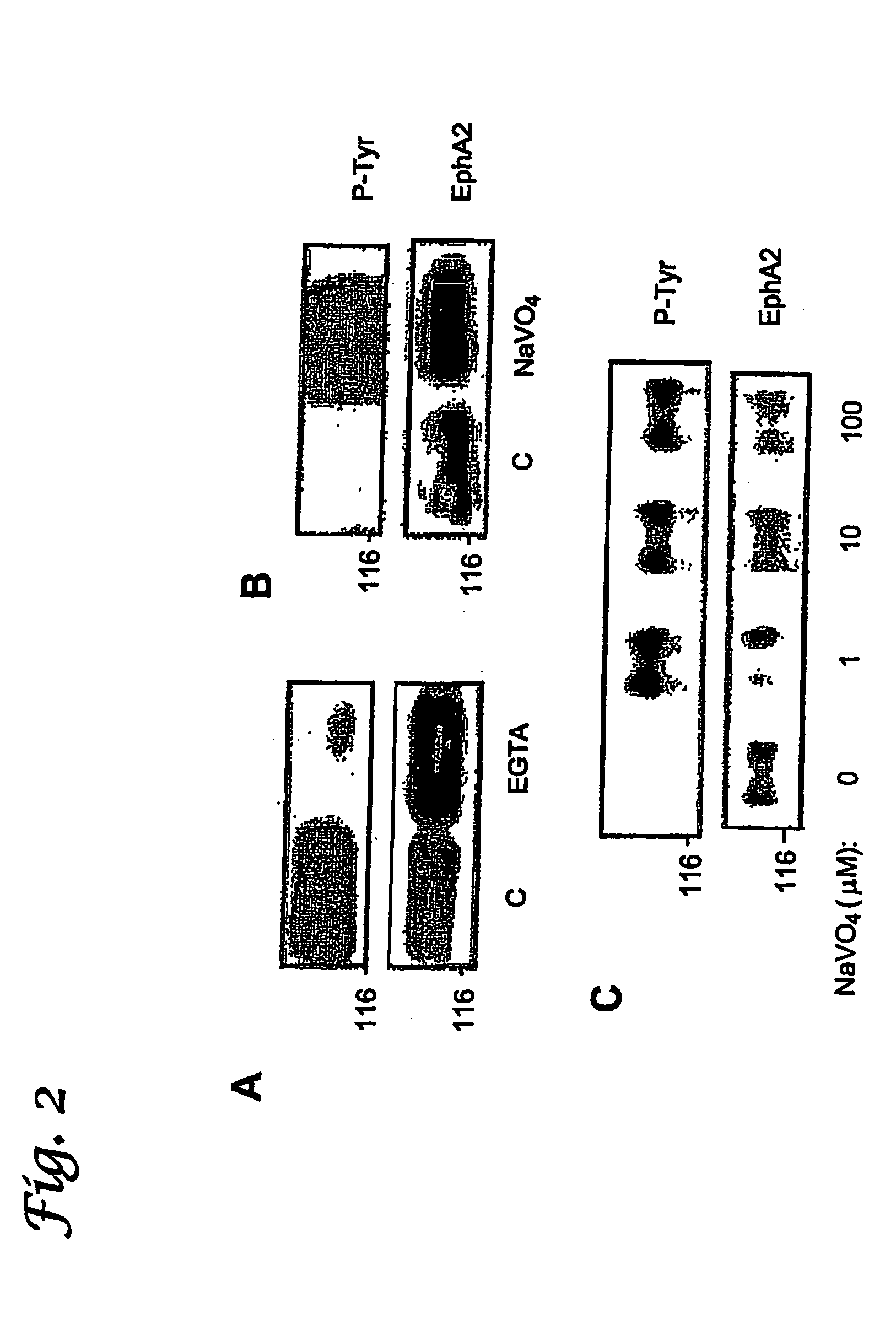EphA2, EphA4 and LMW-PTP and methods of treatment of hyperproliferative cell disorders
a hyperproliferative cell and epha4 technology, applied in the field of treatment, management or prevention of hyperproliferative cell disease, can solve the problems of breast cancer morbidity and mortality, the most life-threatening form of cancer, and the increase of destruction, so as to minimize or delay the spread of cancer.
- Summary
- Abstract
- Description
- Claims
- Application Information
AI Technical Summary
Benefits of technology
Problems solved by technology
Method used
Image
Examples
Embodiment Construction
[0124] Tyrosine phosphorylation is controlled by cell membrane tyrosine kinases (i.e., enzymes that phosphorylate other proteins or peptides), and increased expression of tyrosine kinases is known to occur in metastatic cancer cells. In addition, increased levels of unphosphorylated EphA2, EphA4, EphB 1 and some other Eph family kinases have been implicated in oncogenesis and, in particular metastasis. Phosphorylation of EphA2 or EphA4 leads to degradation of EphA2 or EphA4, which results in inhibition of oncogenesis, in particular, inhibition of metastasis. The present invention is based, in part, on the inventors' discovery that an enzyme that catalyzes dephosphorylation of EphA2 and EphA4 is a powerful oncoprotein and that this enzyme and EphA2 / EphA4 are overexpressed in cancer cells. This enzyme is low molecular weight protein tyrosine phosphatase (LMW-PTP). In particular, the link between EphA2 / EphA4 and LMW-PTP expression or activity can be exploited by targeting the cell surf...
PUM
| Property | Measurement | Unit |
|---|---|---|
| molecular weight | aaaaa | aaaaa |
Abstract
Description
Claims
Application Information
 Login to View More
Login to View More - R&D
- Intellectual Property
- Life Sciences
- Materials
- Tech Scout
- Unparalleled Data Quality
- Higher Quality Content
- 60% Fewer Hallucinations
Browse by: Latest US Patents, China's latest patents, Technical Efficacy Thesaurus, Application Domain, Technology Topic, Popular Technical Reports.
© 2025 PatSnap. All rights reserved.Legal|Privacy policy|Modern Slavery Act Transparency Statement|Sitemap|About US| Contact US: help@patsnap.com



